The cow welfare initiative ensures animal welfare
The small-scale farming structures enable individual and personal animal care. And that is important – because the well-being of the animals has the highest priority for our hay-milk farmers.
Hay milk cows have received fresh grasses and herbs in summer and hay in winter since time immemorial. This is supplemented by mineral-rich grain meal. Fermented feedstuffs such as silage are strictly prohibited. But hay milk farmers treat their livestock to more than just species-appropriate feeding. Sufficient exercise, cosy resting places and personal care also ensure well-being and make bovine hearts jump for joy.
The KUHWOHL Initiative (COW WELFARE Initiative) naturally extends to hay milk goats and sheep as well.
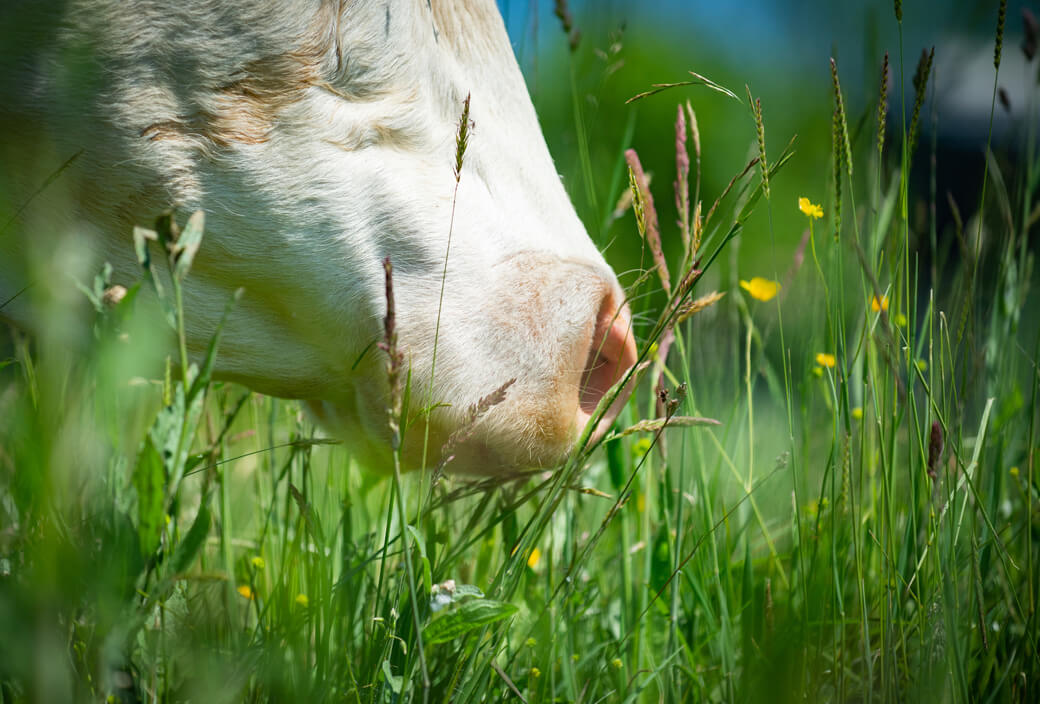
Species-appropriate feeding makes the difference!
Cows are ruminants. Fresh grasses and herbs are their natural staples, which they find in summer on the fields, pastures and alpine meadows. In winter, hay milk cows receive this aromatic and varied feed in the form of hay.
This is supplemented by mineral-rich grain meal, which must be sourced in Europe and guaranteed GMO-free.
Fermented feedstuffs such as silage are strictly prohibited.
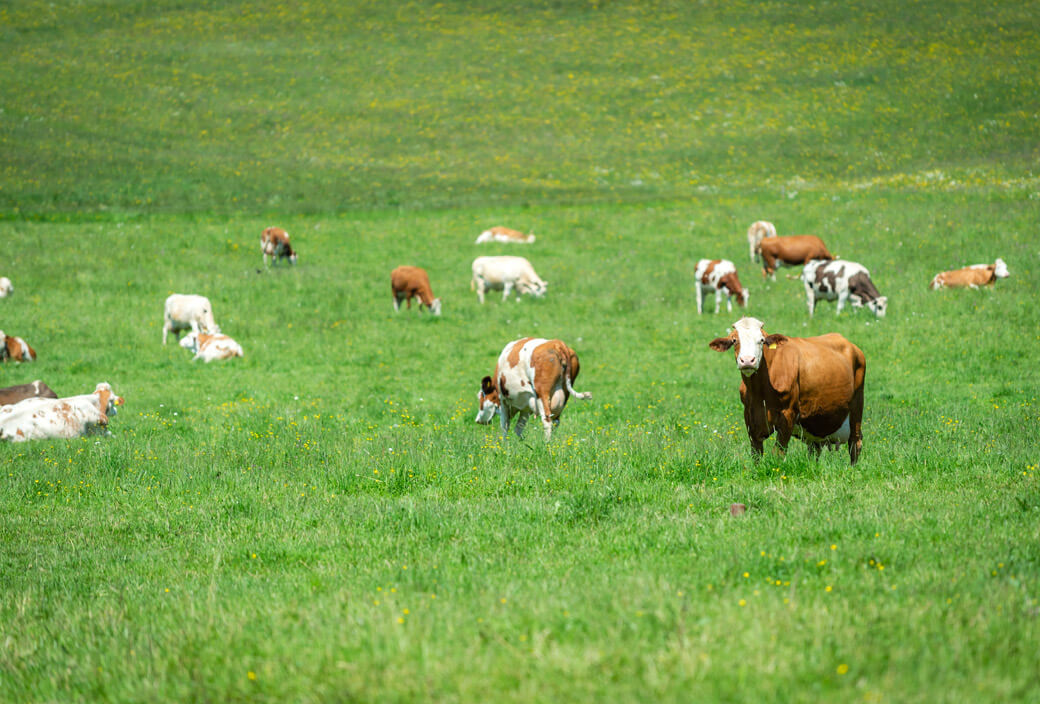
Sufficient space for hay milk cows!
The opportunity to exercise on fields, pastures and alpine meadows with fresh air and warm sun is absolutely vital to keep animals healthy. Our hay milk cows are housed in open stables or are put out to pasture for at least 120 days each year.
Permanent tethering is prohibited.
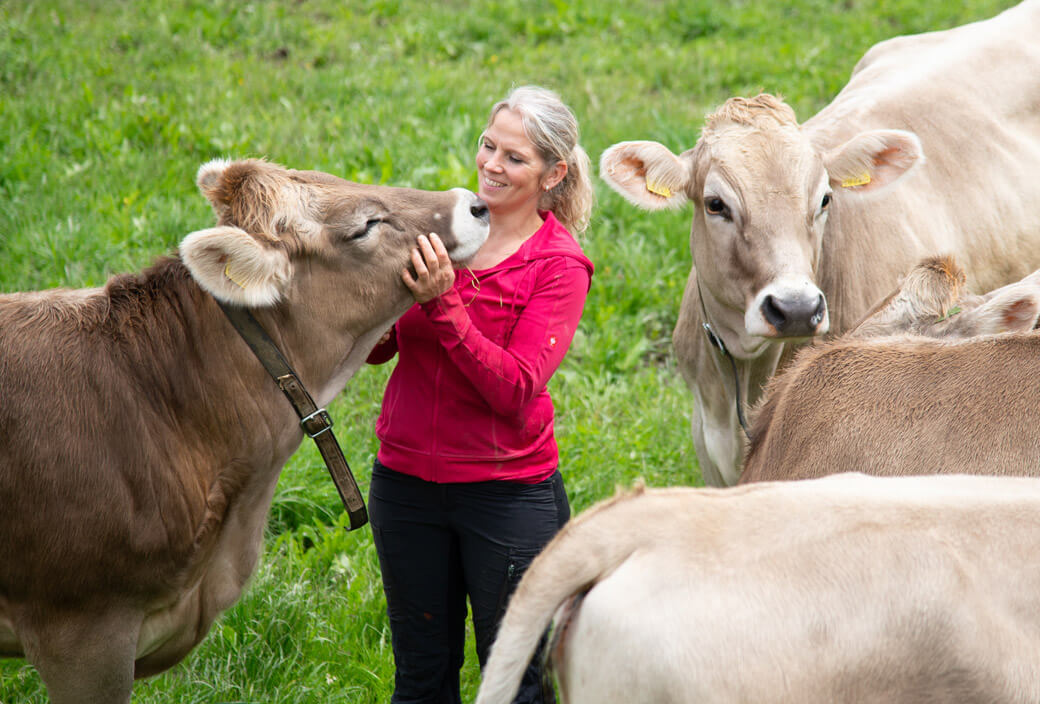
Personal care matters to us!
Due to the small-scale farming structures, our hay-milk farmers take care of a small animal population.
They know the names, characteristics and traits of their average of about 17 cows very well.
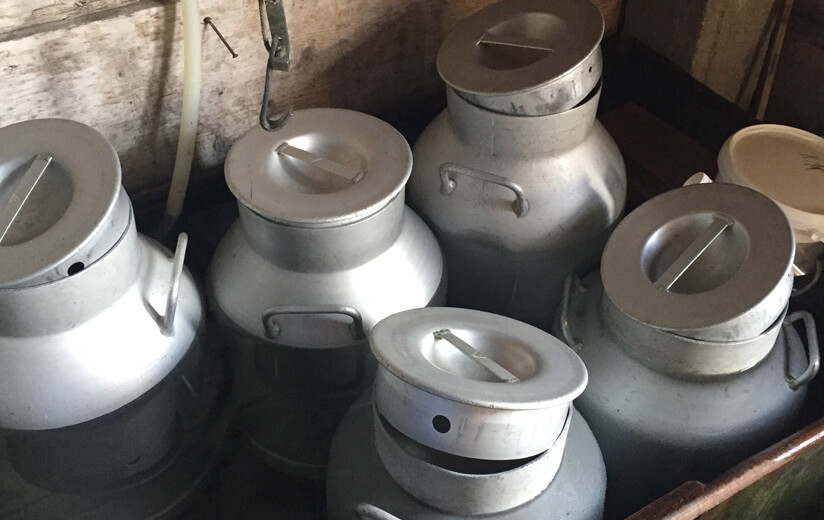
Top performance is not required
Hay-milk cows do not have to produce maximum output. The species-appropriate feeding results in an average milk yield.
In industrialized agriculture in Europe, milk yields of up to 50 kg per day can be achieved by using enormous amounts of concentrated feed. Our hay-milk cows are far from this. By following their natural way of life, they give about 18 kg of milk per day.
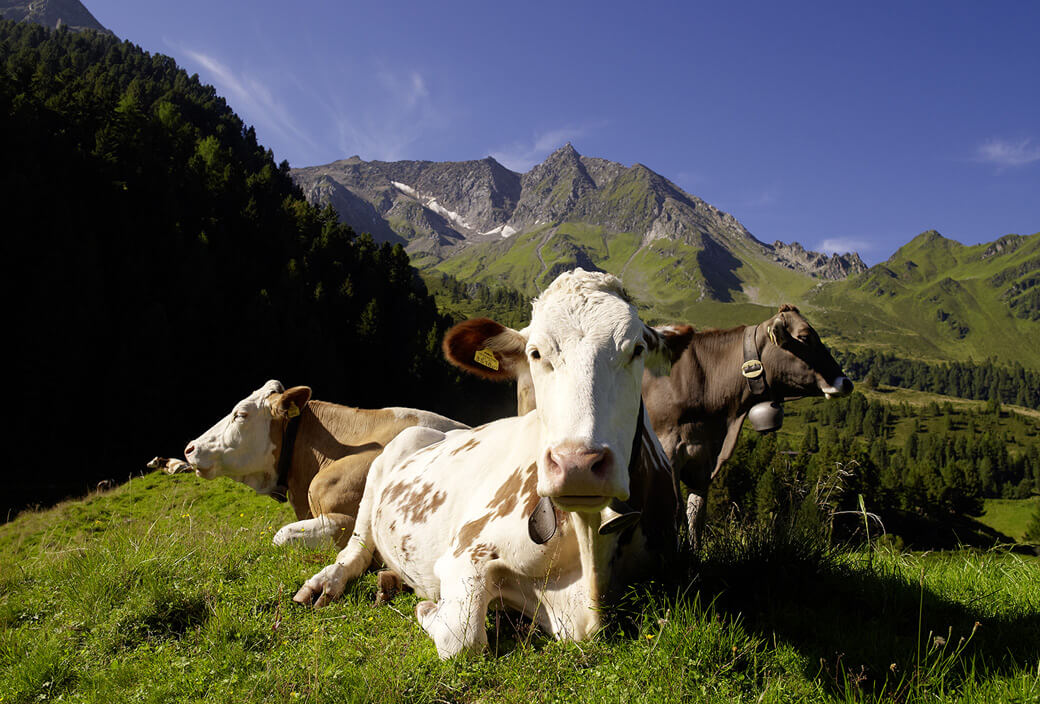
Diversity of cattle breeds
Our hay-milk farmers rely on cattle breeds that are perfectly adapted to the requirements of hay farming. They keep healthy and hardy animals that can cope excellently even in high alpine pastures. Braunvieh, Grauvieh, Original Pinzgauer and many other breeds can be seen on the farms of hay-milk farmers.
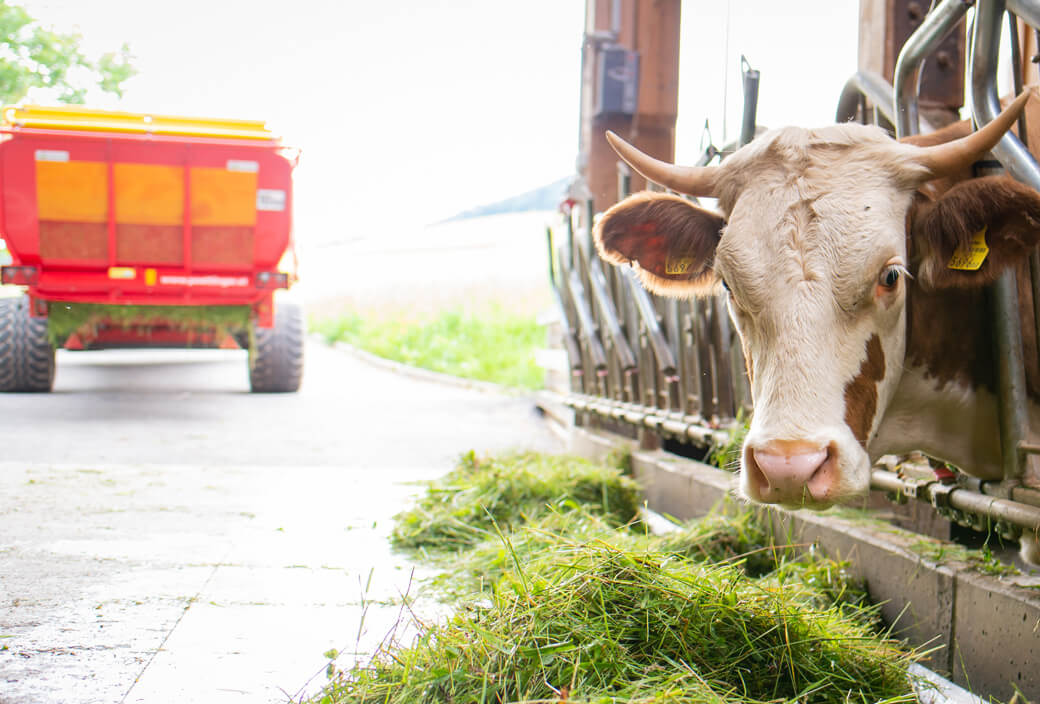
Sufficient space in the barn
Since cows spend half of the day resting and lying down, hay-milk farmers provide generous lying space and sufficient fresh air in the barn.
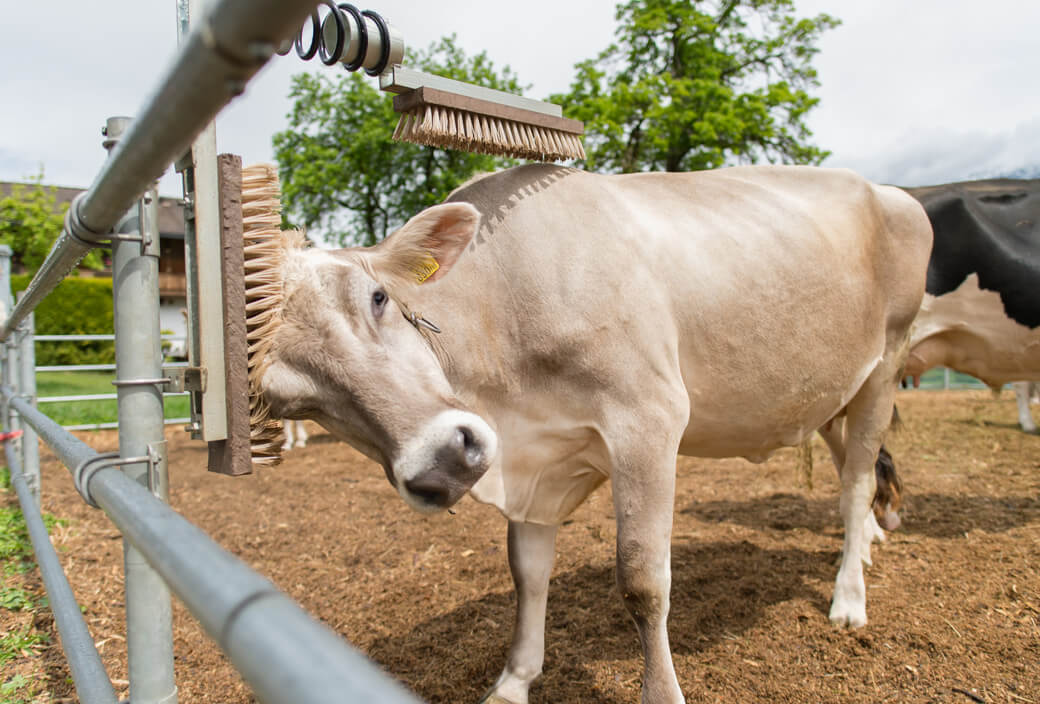
Cow comfort through scratch brushes
On many farms, scratching brushes in the free stall or range bring the best possible cow comfort.
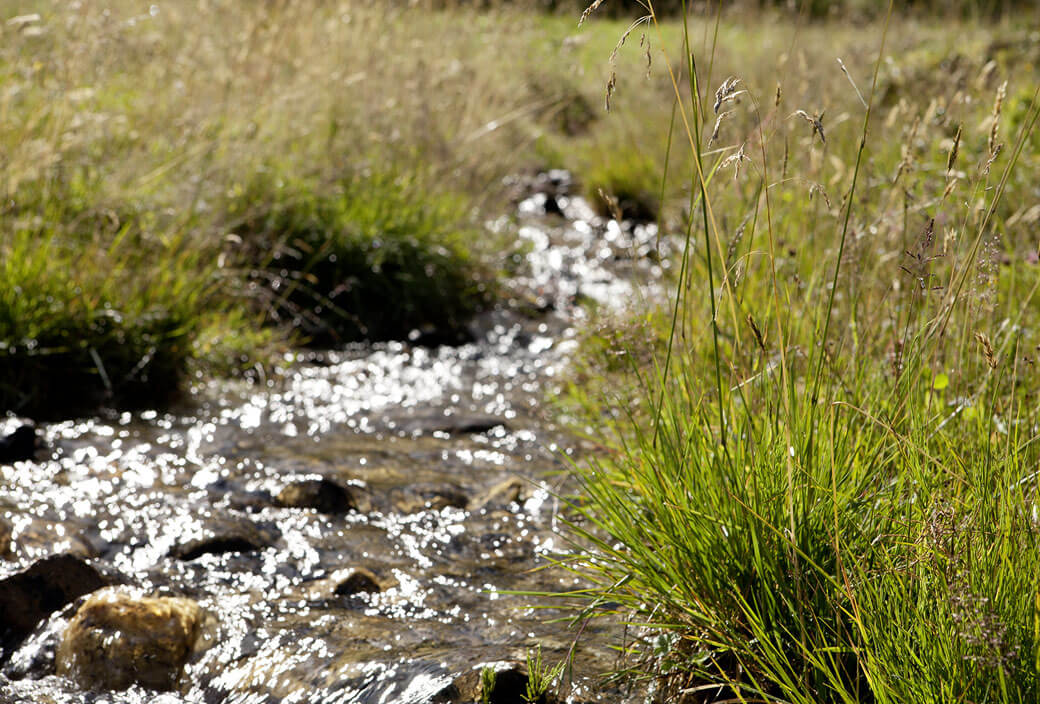
Fresh water for well being!
Cows need up to 120 litres of water per day to feel well. Fresh water is always easily accessible for hay milk cows in the stable or on the pasture and is available in sufficient quantities. Hay milk farmers pay attention to this.
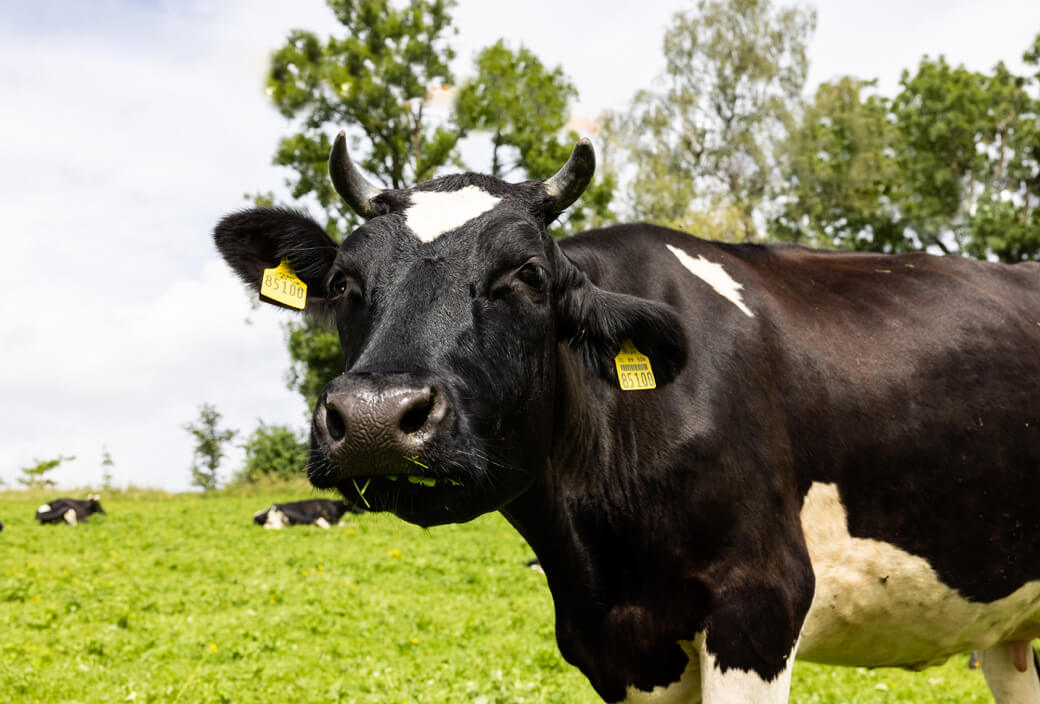
We care about animal health!
Keeping our hay milk cows healthy is our top priority. Veterinarians conduct preventative check-ups on a regular basis, providing professional advice to ensure their well-being.